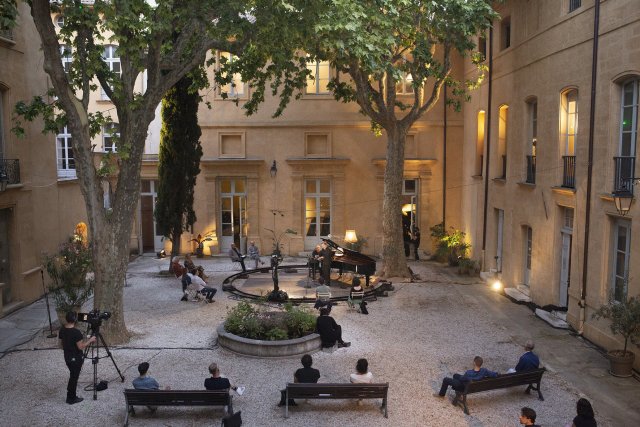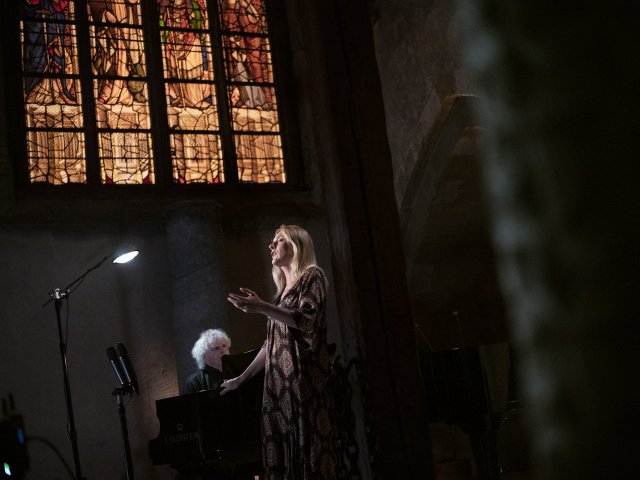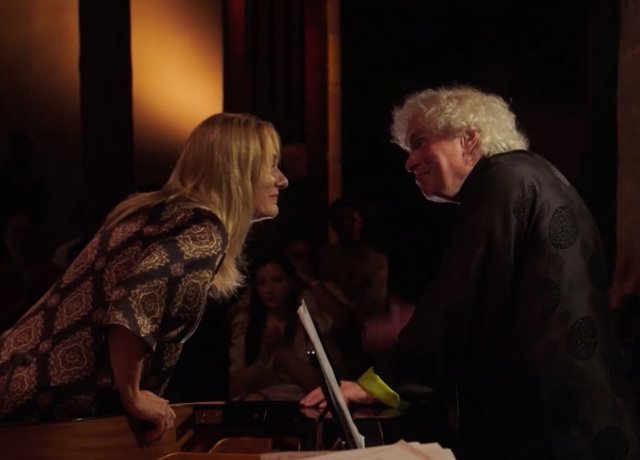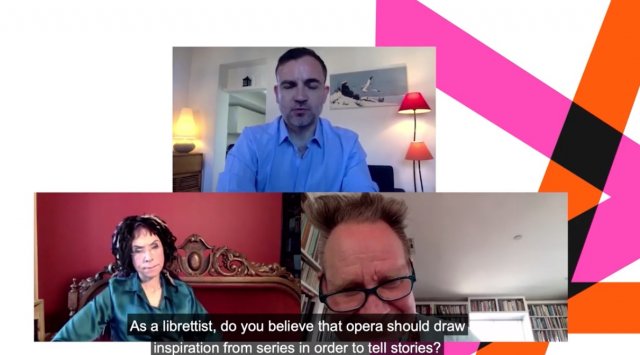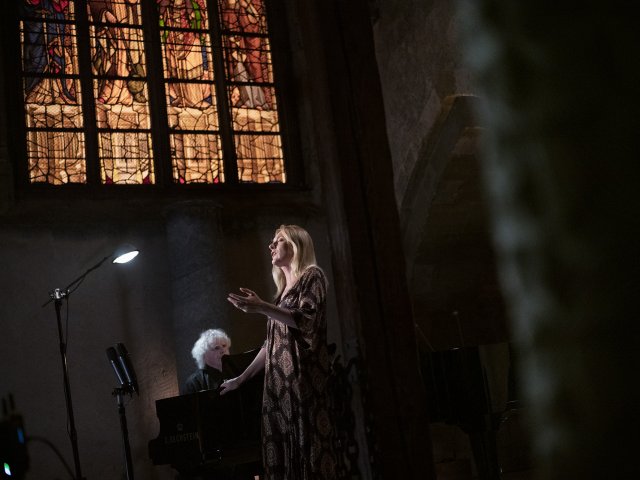Streaming from Aix-en-Provence
Saariaho, Sellars, Rattle and Kožená
By: Susan Hall - Jul 07, 2020
Aix-en-Provence solved the social distancing issue in one fell swoop when the wife and husband couple, Magdalena Kožená and Sir Simon Rattle performed together in concert. Kožená sang a program that included her fellow countrymen's songs.
Kožená is utterly unique and irresistible. Her consistent texture underlies colorful dynamic emphases, and the lovely long arc of her lines. She invests in character and mood.
When talking about her artistic partnership with Rattle, Kožená notes, “I think if you are with someone you know so well you can really relax." The intimacy of knowing her accompanist on a deep level “creates a deep comfort in performance. ”…Simon for me is one of the most brilliant musicians on this planet. Any opportunity to do something with him is always inspiring as a musician.”
Kožená performed Brahms and Strauss in addition to Leoš Janácek’s Moravian Folk Poetry in Songs and Antonín Dvorák’s Evening songs. These may be cast in her native language and music, but for me, the Ophelia songs of Brahms and Strauss were particularly moving. Best of all, Debussy’s three erotic songs set to poems attributed to a fictional contemporary of Sappho’s.
For many artists, balancing the personal and the professional in the opera world is complicated. In order to find the appropriate balance over the past decade, Kožená has cut the number of opera productions to one or two per year. She has favored concert performances that enable her to remain close to her family. She gave a delightful performance as Octavian in Der Rosencavalier at the Metropolitan Opera in 2019. Rattle conducted there, after making his long anticipated debut in 2011 conducting Pelléas et Mélisande, in which Kožená was a headliner.
Aix is offering Wozzeck, Cosi Fan Tutte, The Golden Cockerel, L’Incoronazione di Poppea, Innocence (a world premiere by Kaija Saariaho) and L’Orfeo.
A conversation between Peter Sellars and Sohi Oksanen, the librettist of Innocence by Kaija Saariaho, was novel and engaging. They discussed the virtues of the opera form and its place in the world. Sellars calls for the end of imperial opera, large houses in which melodramas of another century and another world play out. He wants intimate, unexpected places to produce. In this country, companies like OnSite Opera and Experiments in Opera lead the way. Old folks should turn over the production of opera to young ones. “Let them do what they want,” says Sellars. “My time has come and gone.”
Sellars makes the case for relevance. You can emphasize Mozart’s preoccupation with forgiveness and redemption into a meaningful contemporary moment. He accepts the message he hears the Planet calling out with the new virus. “You have wronged me. You need to find a new path.”
Thankfully for opera, Sellars finds the form perfect for delivering a message. Its combination of visual, auditory, dance and song, means that messages are multi-layered and as complicated as we humans are. It matches us, if we will let the form in.
Some wonder if the powers that be at Lincoln Center would mow the place down, as many people feel they should, replacing it perhaps with Denver’s grouping of 22 theaters of various sizes and proscenia. Mixed income housing built above the performance spaces could provide homes at reasonable prices to New Yorkers, 5,000 of whom were displaced when Lincoln Center took the wrecking ball to the old West Side Story neighborhood. The Met might find a more appropriate venue to mount its successful HDs. Dream on.
Aix has us dreaming on. As July rolls on, dip into its fantastic offerings. Check the calendar and enjoy.

